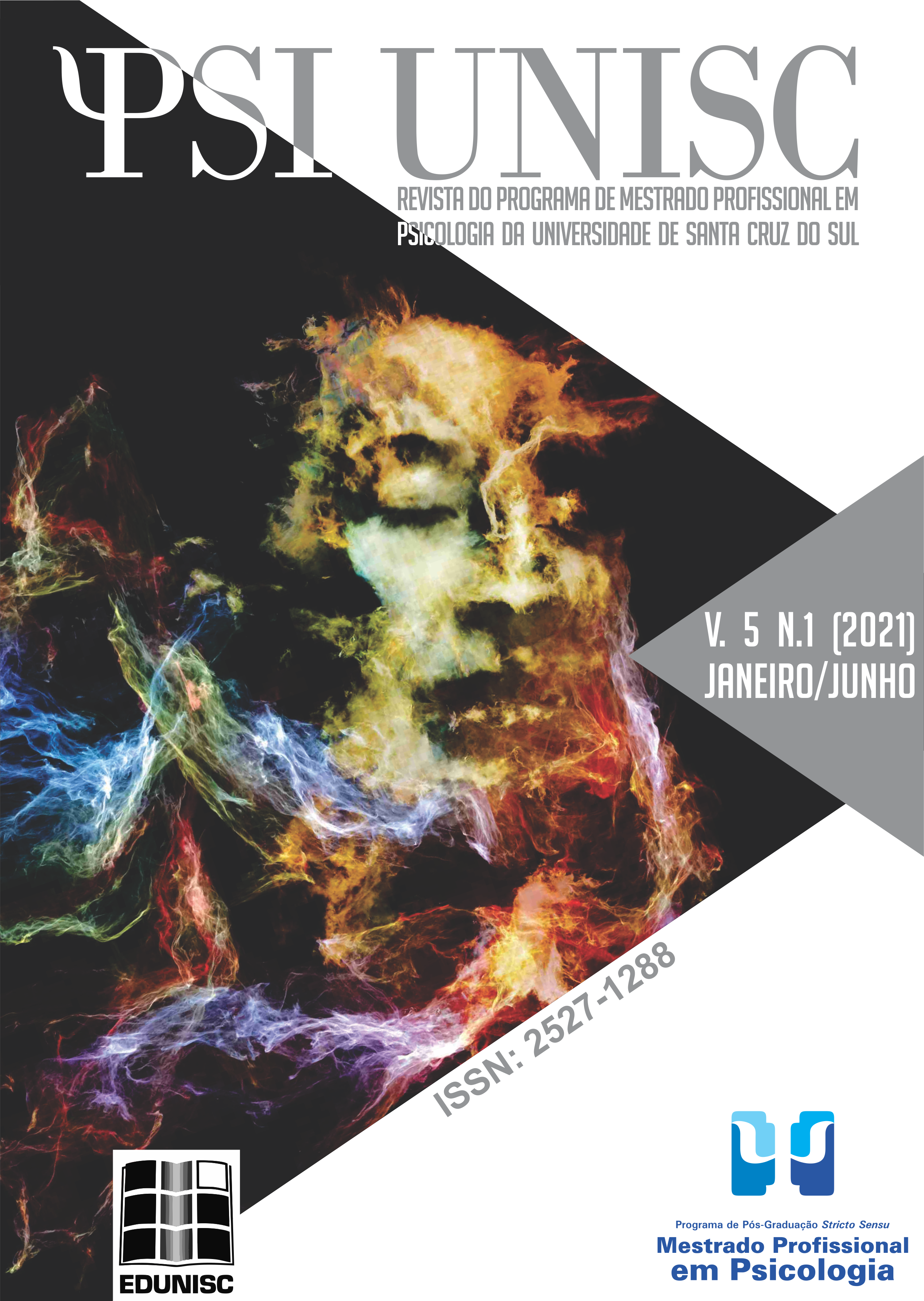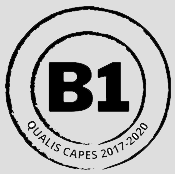The presentification in time and space of the online psychological clinic: experience report
DOI:
https://doi.org/10.17058/psiunisc.v5i1.15751Keywords:
Psychotherapy, Psychosocial support systems, Online systems, Pandemic.Abstract
From one day to the next, we compulsorily started to attend our patients through a compute or a telefone, due to the pandemic of the new coronavirus. Challenges of an unprecedented context have been imposed in the field of clinical psychology and psychoanalysis. We entered an unknown time and space and, passing through it, we built other paths. Cartographic trails offered elements to think about psychotherapeutic relationships in a new moment and in a new space. Thus, from the experiences in the contexts of the private psychological clinic, and from the institutional psychological support online, this text aims to point out and discuss the worries I experienced, as well the questions raised, during the quarantine period. Through what I have called “the chronology of novelties of the resistance to surprises”, I approach the impacts felt in the online work mode. I have found horizontalities in the relationships marked by the asymmetry of the psychotherapeutic encounter, and I have recognized the body presence in the virtual connections.Downloads
References
Birman, J. (2020, junho 16). Uma leitura psicanalítica da pandemia. [Arquivo de vídeo]. Recuperado de https://www.youtube.com/watch?v=LtEaiwmXqao
Campos, B. (2020, junho 28). Anatomia do medo em ‘A bruxa de Blair’, da série “filmes mais psicanalíticos de todos os tempos”. [Arquivo de vídeo]. Recuperado de https://www.instagram.com/p/CB--wD9pfup/
Cunha, C. (2020, junho 8). Saúde mental em tempo de pandemia. [Arquivo de vídeo]. Recuperado de https://www.youtube.com/watch?v=Q7APZJygeek
Deleuze, G. (2013). Conversações. São Paulo, SP: Editora 34. (Obra original publicada em 1992).
Evaristo, C. (2016). Insubmissas lágrimas de mulheres. Rio de Janeiro, RJ: Malê Editora.
Freud, S. (2010). O inquietante. In S. Freud, Obras completas (P. C. de Souza, trad., v. XIV, s.p). São Paulo, SP: Companhia das Letras. (Trabalho originalmente publicado em 1919).
Gondar, J. (2017). As coisas e as palavras: Ferenczi e a linguagem. In E. Schueler Reis & J. Gondar (Orgs.), Com Ferenczi. Clínica, Subjetivação, Política (pp.112-121). Rio de Janeiro, RJ: 7 letras.
Gondar, J. (2020, abril 25). A Elasticidade da técnica em tempos de Covid-19 com Jô Gondar, Helia Borges e Bartholomeu Vieira. [Arquivo de vídeo]. Recuperado de https://www.youtube.com/watch?v=jlv60RAwjzs
Krenak, A. (2019). Ideias para adiar o fim do mundo. São Paulo, SP: Companhia das letras.
Machado, A. (n.d). Provérbios y cantares – XXIX. In Campos de Castilla: Poesías completas. (Trabalho originalmente publicado em 1912). Recuperado de http://www.espacioebook.com/sigloxx_98/machado/machado_camposdecastilla.pdf
Passos, E., Kastrup, V., & Escóssia, L. (2015). Apresentação. In E. Passos, V. Kastrup, & L. Escóssia (Org.), Pistas do método da cartografia. Pesquisa-intervenção e produção de subjetividade (pp. 7-16). Porto Alegre, RS: Sulina.
Reich, W. (1975). A função do orgasmo. São Paulo, SP: Editora Brasiliense.
Reis, E. (2004). De corpos e afetos, transferência e clínica psicanalítica. Rio de janeiro, RJ: Contra Capa.
Santos, L. (2020). Algumas reflexões sobre a clínica em tempos de pandemia. Revista da Sociedade de Psicanálise Iracy Doyle Ensaios, Psicanálise em tempos de pandemia, Edição especial digital, 48-51. Recuperado de https://drive.google.com/file/d/1ErBBccILwnTnJh-0YMtVYIcgD5ypE40H/view?fbclid=IwAR2Cp-ok0DpS9Oq39BsRmw2ddviePQyHngsu6Zop9eM9gvw728N6jRVGFtM
Zambenedetti, G., & Silva, R. A. N. (2011). Cartografia e genealogia: aproximações possíveis para a pesquisa em psicologia social. Psicologia & Sociedade, 23(3), 454-463. doi: 10.1590/S0102-71822011000300002
Downloads
Published
How to Cite
Issue
Section
License
The submission of originals to this journal implies the transfer, by the authors, of the printed and digital publication rights. The copyrights for the published articles are those of the author, with periodical rights on the first publication. Authors may only use the same results in other publications clearly indicating this journal as the medium of the original publication. Because we are an open access journal, we allow free use of articles in educational and scientific applications provided the source is cited under the Creative Commons CC-BY license.




